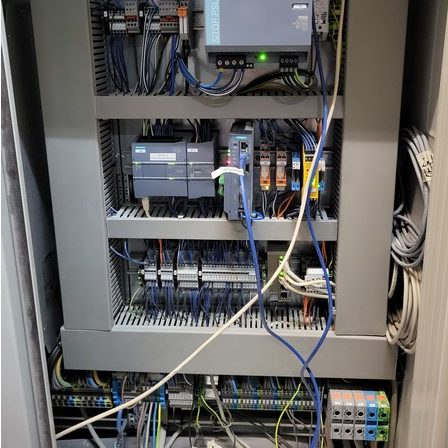Websockets | TLS
WebSockets are a protocol that allows bi-directional connections to be made between a client and a server over the Internet. They are often used to enable real-time interactions, for example in chat applications, online games, or applications that rely on live data.
WebSockets are established via a handshake between client and server, and the WebSocket protocol is built on top of the Transport Layer Security (TLS) protocol to ensure secure connections. After the handshake is complete, both the client and the server can send and receive data over the WebSocket connection.
WebSockets are often used in combination with other technologies such as HTML, CSS, and JavaScript to enable user interactions in web applications. They can also be used with server-side technologies such as Node.js and WebSocket libraries in other programming languages.
An important advantage of WebSockets over other technologies such as HTTP is that they consume fewer resources and provide faster response times because they do not rely on establishing new connections to send and receive data. They are therefore particularly well suited for applications that rely on fast interactions and smooth communication.
BITS experts have used Websockets in a variety of projects. A selection of case studies and references can be found below.
“We are happy to support you with your digital challenges and look forward to hearing from you without obligation.”
Marc Schallehn, Managing Director BITS GmbH

Gerne unterstützen wir Sie bei Ihren IT Projekten. Ich freue mich über Ihre Kontaktaufnahme.
Selection of case studies and references
Technology modernization
Technology modernization From legacy to leading edge - smart IT modernization with BITS At a time when technological developments are advancing ever faster, it is essential for companies to modernize their IT infrastructure [...]
Development of a web application and a mobile app to improve breast cancer patient follow-up.
Together with Apps in Medicine GmbH, AOK Bayern, DAK Gesundheit and Siemens Betriebskrankenkasse (SBK), under the direction of the Klinikum rechts der Isar of the Technical University of Munich (MRI), BITS participated in the PRISMA study as a consortium partner for the technical infrastructure.
Establishment and operation of a European trading platform for pharmaceuticals
Together with arex PHARMA GmbH, a specialist in the international trade and distribution of European pharmaceuticals, BITS GmbH has established the EU-wide trading platform Rxchange for pharmaceutical products as a strategic IT partner.
Connection of production machines of a medium-sized manufacturer to the Industry 4.0 OEE solution of BITS for monitoring and optimization of production
In this Industry 4.0 project, BITS' task was to monitor and control production machines with the help of an OEE solution in order to optimize quality, capacity utilization and costs.
Development and operation of the DACH wide Internet e-commerce platform www.getraenkedienst.com
Together with drink now GmbH, a specialist in beverage sales, BITS GmbH has set up and operates the Internet e-commerce platform www.getraenkedienst.com as a strategic IT partner successful to this day.






